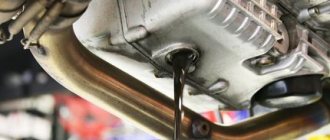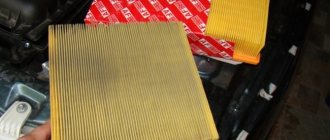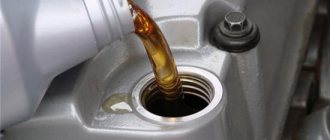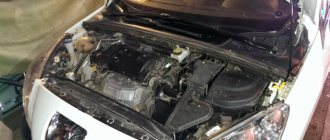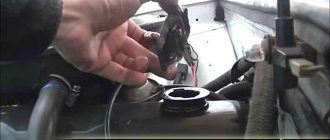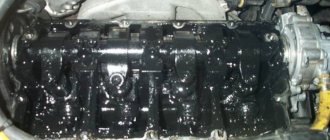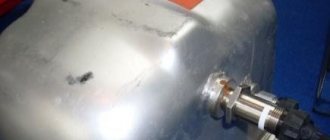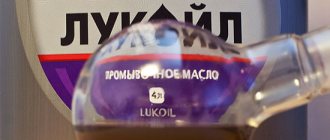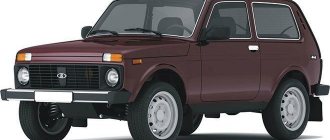One of the common problems with internal combustion engines is oil getting into the cooling system. Such a violation may lead to failure of the power unit and the need for major repairs. Therefore, it is important to be able to timely diagnose a malfunction and eliminate the causes that led to the penetration of lubricant into the antifreeze.
Oil getting into the cooling system is more often observed in foreign car models, but domestic models also suffer from this problem. This defect indicates a lack of tightness in the cooling and lubrication systems. The malfunction must be eliminated immediately, almost at the moment of discovery. Otherwise, the matter will end with a major overhaul of the engine.
The internal combustion engine requires lubricant for efficient operation and cooling. In the head and the cylinder block itself there are special channels - oil and cooling system channels (cooling jacket). The presence of oil in antifreeze can be observed regardless of the characteristics of the engine and the type of fuel used.
Signs of oil getting into antifreeze
There are a number of typical signs by which you can understand that engine oil is getting into the coolant (antifreeze or antifreeze). Regardless of exactly how much grease gets into the antifreeze, the signs listed below will indicate a problem that needs to be solved as quickly as possible in order to prevent serious and expensive repairs to the car’s engine.
So, signs of oil leaking into antifreeze include:
- Change in color and consistency of coolant. Normal working antifreeze is a clear liquid that is blue, yellow, red or green. Its darkening for natural reasons occurs for quite a long time, and is usually comparable to a routine replacement of the coolant. Accordingly, if the antifreeze has darkened ahead of schedule, and even more so, its consistency has become thicker, with admixtures of fat/oil, then this indicates that the oil has gone into the antifreeze.
- There is a greasy film on the surface of the antifreeze in the expansion tank of the engine cooling system. It is visible to the naked eye. Typically, the film has a dark tint and reflects light rays well in different colors (diffraction effect).
- The coolant will feel oily to the touch. To convince yourself of this, you can drop a small amount of antifreeze on your fingers and rub them between your fingers. Pure antifreeze will never be oily; on the contrary, it will evaporate quite quickly from the surface. Oil, if it is present in antifreeze, will be clearly felt on the skin.
- Change in antifreeze odor. Typically, coolant has no odor at all or has a sweetish aroma. If oil gets into it, the liquid will have an unpleasant burnt smell. And the more oil in it, the more unpleasant and distinct the aroma will be.
- Frequent engine overheating. Due to the fact that oil reduces the performance characteristics of antifreeze, the latter is not able to properly cool the engine. This includes reducing the boiling point of the coolant. Because of this, it is possible that antifreeze will be “squeezed out” from under the radiator cap or the cap of the expansion tank of the cooling system. This is especially true for engine operation in the hot season (summer). Often, when the engine overheats, its uneven operation is observed (it “troits”).
- Oil stains are visible on the walls of the expansion tank of the cooling system.
- There may be oil deposits on the cooling system expansion tank caps and/or the radiator cap on the inside, and an emulsion of oil and antifreeze will be visible from the top under the cap.
- When the engine speed increases, air bubbles escaping from the liquid are visible in the expansion tank. This indicates a depressurization of the system.
The above information is organized in the table below.
| Signs of breakdown | How to check for a breakdown |
| Change in coolant color and consistency | Visual inspection of coolant |
| Presence of an oil film on the coolant surface | Visual inspection of the coolant. Check for oil stains on the inner walls of the cooling system expansion tank |
| The coolant has become oily | Tactile coolant check. Check the inner surface of the expansion tank and radiator caps of the cooling system |
| Antifreeze smells like oil | Check the coolant using your sense of smell |
| Frequent engine overheating, antifreeze squeezing out from under the expansion tank cap, engine “troubles” | Check the antifreeze level in the system, its condition (see previous paragraphs), coolant pressure |
| Air bubbles escaping from the cooling system expansion tank | The higher the engine operating speed, the more air bubbles there are; in any case, this indicates depressurization of the system |
Thus, if a car owner encounters at least one of the signs listed above, then it makes sense to perform additional diagnostics, check the condition of the antifreeze, and, accordingly, begin to search for the reasons that led to the presented situation.
Which oil filter is better?
The first step is to separate oil filters by engine type (gas, gasoline and diesel engines). The fact is that in diesel engines the oil becomes much more contaminated; when a diesel engine burns, a large amount of soot is formed plus a large load on the engine. Therefore, you need to take seriously the selection of a high-quality filter in a diesel car.
The main criterion for filters by which they differ is the cleaning principle. They are divided into:
- mechanical
- magnetic
- centrifugal
- gravitational
The mechanical type of oil purification has become the most popular in our time. The principle of its operation is that it passes oil through special calico, which traps dirt particles. Mechanical filters, in turn, are divided into fine, medium and coarse filtration. A fine filter purifies oil by passing oil through a paper membrane, and medium and coarse filtration through wire plates. But it is worth noting that there is almost no difference between medium and coarse filtering.
Baldwin is considered one of the most trusted companies on the market; they have a fairly wide range of products (about 700 types). This company is trusted by millions of car owners.
Reasons for oil getting into antifreeze
Why does oil go into antifreeze? In fact, there are a number of typical reasons why this malfunction occurs. And in order to understand why exactly the oil went into antifreeze, it is necessary to perform additional diagnostics of the condition of individual engine elements.
We list the typical causes from the most common to the rather rare:
- Burnout of the cylinder head gasket. It can be either natural wear or incorrect torque during installation (ideally, you should tighten it with a torque wrench), misalignment during installation, incorrectly selected size and/or gasket material, or due to overheating of the motor.
- Damage to the cylinder head plane. For example, a microcrack, sinkhole, or other damage may occur between its body and the gasket. In turn, the reason for this may be hidden in mechanical damage to the cylinder head (or the engine as a whole), or head misalignment. It is also possible that corrosion may occur on the cylinder head housing.
- Wear of the gasket or failure of the heat exchanger itself (another name is the oil cooler). Accordingly, the problem is relevant for machines equipped with this device. The gasket may become weak due to age or improper installation. As for the heat exchanger body, it can also fail (a small hole or crack appears in it) due to mechanical damage, aging, and corrosion. As a rule, a crack occurs in the pipe, and since the oil pressure at this point will be higher than the antifreeze pressure, the lubricating fluid will also enter the cooling system.
- Crack in the cylinder liner. Particularly from the outside. Thus, as a result of engine operation, oil entering the cylinder under pressure through a microcrack can flow in small doses into the coolant.
In addition to the listed typical reasons that are typical for most gasoline and diesel engines, some engines have their own design features that can cause oil to leak into antifreeze and vice versa.
One of these engines is a 1.7-liter diesel engine for Opel under the designation Y17DT manufactured by Isuzu. In particular, in these engines the injectors are located under the cylinder head cover and are installed in glasses, the outer side of which is washed with coolant. However, the sealing of the glasses is ensured by rings made of elastic material, which hardens and cracks over time. Accordingly, as a result of this, the degree of sealing decreases, which makes it possible that the oil and antifreeze will mix together.
In these same engines, cases are occasionally recorded where, as a result of corrosion damage to the cups, small holes or microcracks appear in their walls. This leads to similar consequences for mixing the mentioned process fluids.
The above reasons are systematized in the table.
| Reasons for the appearance of oil in antifreeze | Elimination methods |
| Cylinder head gasket burnout | Replacing the gasket with a new one, tightening the bolts to the required torque using a torque wrench |
| Damage to the cylinder head plane | Grinding the plane of the block head using special machines at a car service center |
| Failure of the heat exchanger (oil cooler) or its gasket | Replace the gasket with a new one. You can try to solder the heat exchanger, but this is not always possible. In the latter case, you need to replace the part with a new one. |
| Loosening the cylinder head bolts | Setting the correct tightening torque using a torque wrench |
| Crack in cylinder liner | Cleaning the surface with a grinding wheel, chamfering, sealing with epoxy pastes. At the final stage, steel surfacing was performed using cast iron rods. In the most severe case, complete replacement of the cylinder block |
Photo gallery
Photo on cleaning the cooling system of a car.
1. Remove the heat exchanger located next to the BC
2. Clean the device and replace the gasket
3. Remove the container and rinse it thoroughly
4. Clean the cooling system
Consequences of oil getting into antifreeze
Many, especially novice, car enthusiasts are interested in the question of whether it is possible to drive when oil has got into the antifreeze. In this case, it all depends on exactly how much oil got into the coolant. Ideally, even if there is the slightest leak of lubricant into the antifreeze, you need to go to a car service center or garage, where you can carry out repair work yourself or seek help from specialists. However, if the amount of oil in the coolant is small, then you can still drive the car a short distance.
It is necessary to understand that oil not only reduces the performance of antifreeze (which leads to a decrease in engine cooling efficiency), but also causes harm to the overall cooling system. Also, often when such emergency situations occur, not only the oil gets into the coolant, but also vice versa - antifreeze gets into the oil. And this can already lead to significant problems during the operation of the engine itself. Therefore, when the mentioned problem is identified, repair work must be carried out as quickly as possible, since delaying it is fraught with the occurrence of more serious breakdowns and, accordingly, expensive repairs. This is especially true for operating the machine in hot weather (summer), when the operation of the engine cooling system is critical for the power unit!
As a result of using coolant that contains motor oil, the following problems with the car engine may occur:
- Frequent overheating of the engine, especially when operating the machine in hot weather and/or operating the engine at high speeds (high loads).
- Clogging of cooling system elements (hoses, pipes, radiator elements) with oil, which reduces their efficiency down to a critical level.
- Damage to cooling system elements made of non-oil resistant rubber and plastic.
- Reduced service life not only of the engine cooling system itself, but also of the entire engine as a whole, since with a faulty cooling system it practically begins to wear out or in a mode close to it.
- If not only the oil gets into the antifreeze, but also vice versa (antifreeze flows into the oil), this leads to a decrease in the efficiency of lubrication of internal engine parts, protecting them from wear and overheating. Naturally, this also negatively affects the operation of the motor and its normal service life. In critical cases, the engine may partially or even completely fail.
Thus, it is better to start repair work as early as possible in order to minimize the negative impact of the lubricating fluid not only on the cooling system, but also to prevent a negative impact on the car engine as a whole.
How is emulsion related to defects in automatic transmission operation?
On many cars with an automatic transmission, a heat exchanger is installed to cool the ATF. Unlike an additional air-cooled radiator, antifreeze circulates through the channels inside the liquid heat exchanger housing along with the automatic transmission oil. Depending on the design, the cooler can be remote or combined with the main engine cooling radiator (built inside the housing).
Depressurization of the housing, destruction of the walls between the oil and coolant circulation channels lead to mutual mixing of liquids. It is typical that in this case, first of all, defects arise in the operation of the automatic transmission: kicks, jolts, blows, delayed gear changes.
There is a high probability that after replacing the heat exchanger, it will be necessary to make several partial replacements of the ATF fluid and filter element. This is essential for trouble-free operation and long service life of the automatic transmission.
What to do if oil gets into antifreeze
The performance of certain repairs depends on the reason why oil appeared in the antifreeze tank and in the cooling system as a whole.
- Damage to the cylinder head gasket is the most common and easily solvable problem if there is engine oil in antifreeze. There is only one solution - replacing the gasket with a new one. You can perform this procedure yourself, or by turning to the experts at a car service center for help. It is important to choose a gasket of the correct shape and with the appropriate geometric dimensions. And you need to tighten the mounting bolts, firstly, in a certain sequence (the diagram is indicated in the technical documentation for the car), and secondly, using a torque wrench in order to strictly maintain the recommended tightening torques.
- If the cylinder head (its lower plane) is damaged, then two options are possible. The first (more labor-intensive) is to sharpen it on an appropriate machine. In some cases, the crack can be repaired with high-temperature epoxy resins, chamfered, and the surface cleaned with a grinding wheel (on a machine). The second way is to completely replace the cylinder head with a new one.
- If there is a microcrack on the cylinder liner, then this is a rather complicated case. So, to eliminate this malfunction, you need to seek help from a car service center, where there are appropriate machines with which you can try to restore the functionality of the cylinder block. In particular, the block is bored out and new liners are installed. However, often the entire block is replaced.
- If there are problems with the heat exchanger or its gasket, then it is necessary to dismantle it. If the problem is with the gasket, it needs to be replaced. The oil cooler itself has become depressurized - you can try to solder it or replace it with a new one. Before installation, the repaired heat exchanger must be rinsed with distilled water or special products. However, in most cases, repairing the heat exchanger is impossible due to the very small size of the crack and the complexity of the device design. Therefore, it is replaced with a new one. The heat exchanger can be checked using an air compressor. To do this, one of the holes (inlet or outlet) is plugged, and the air line from the compressor is connected to the second. After this, the heat exchanger is placed in a tank with warm (important!!!, heated to somewhere around +90 degrees Celsius) water. Under such conditions, the aluminum from which the heat exchanger is made expands, and air bubbles will emerge from the crack (if there is one).
When the cause of the breakdown has been identified and eliminated, do not forget that you must replace the antifreeze and also flush the cooling system. It must be carried out according to a standard algorithm and using special or improvised means. If there is a mutual exchange of liquids and antifreeze also gets into the engine oil, then you need to change the oil with preliminary cleaning of the engine oil system.
How to flush the cooling system from emulsion
Flushing the cooling system after engine oil has entered it is a mandatory step, and if you neglect flushing the emulsion and only add fresh antifreeze, this will greatly affect its service life and operation.
Before flushing, old spoiled antifreeze must be drained from the system. Instead, you can use special factory products for flushing cooling systems or so-called folk ones. In the latter case, it is best to use citric acid or whey. An aqueous solution based on these products is poured into the cooling system and driven for several tens of kilometers. Recipes for their use are given in the material “How to flush the cooling system.” After flushing, new antifreeze must be added to the cooling system.
Conclusion
You can use a car that has oil in its cooling system only in the most extreme cases, for example, to get to a car service center. Repair work must be carried out as early as possible, identifying the cause and eliminating it. Using a car in which engine oil and coolant mix together in the long term is fraught with very complex and expensive repairs. So if you notice oil in antifreeze, sound the alarm and prepare for the costs.
Video “Visual diagnosis of the problem”
You will learn what motor fluid mixed with refrigerant looks like and how the fault is diagnosed from the video filmed by the Mir Matizov channel.
Do you have any questions? Specialists and readers of the AUTODVIG website will help you ask a question
Was this article helpful?
Thank you for your opinion!
The article was useful. Please share the information with your friends.
Yes (100.00%)
No
X
Please write what is wrong and leave recommendations on the article
Cancel reply
Rate this article: ( 2 votes, average: 5.00 out of 5)
Discuss the article:
Flushing the cooling system
After replacing the gasket, the car owner should clean the coolant reservoir. Alternatively, you can purchase a new tank and install it in place of the old one. After washing or purchasing, the tank is fixed in place. Pour the required amount of distilled water into the tank and turn on the engine.
The engine should run until the cooling fan turns on. After the engine has been running for 10 minutes, it should be stopped. Here you can notice that as the motor cools, the fan also turns off. After these manipulations, the car owner needs to drain the distilled water.
Washing is carried out several times. It is necessary to pay attention to the poured distilled water. It should not contain particles of motor oil. After flushing the coolant system, you can fill in new high-quality antifreeze recommended by experts.
Important nuances
If you remove the cylinder head, be sure to replace its mounting bolts, since they are pulled out during operation. If you reinstall them, there is a high probability that you will not be able to compress the block head with uniform force. When assembling, follow the sequence and recommended tightening torque of the cylinder head bolts. You can find all the necessary information in the vehicle repair and operation manual.
When reinstalling the heat exchanger, do not install old gaskets. Even the application of high-temperature sealant does not ensure long-term seal tightness.
Bent cylinder head
When overheated, engine parts can become deformed, creating additional problems for the car owner. For example, you may encounter that the plane of the block head will not be perfectly flat. A deviation of a few microns is enough to cause problems. In some places, peculiar cavities are formed, the head does not adhere well to the gasket, because of this, technical fluids begin to mix, forming an emulsion.
It is quite difficult to correct this situation. You need to remove the cylinder head and take it to the craftsmen for grinding. Of course, in this case, you should also inspect the valve system, grind the valves, inspect and possibly replace the valve seals, inspect the condition of the cylinder block and pay special attention to the condition of the oil scraper and compression rings. If they are already worn out, it is better to replace them immediately.
The block head is ground if the deformation is not too severe. Otherwise, you may need a new head or a used part from a donor.
